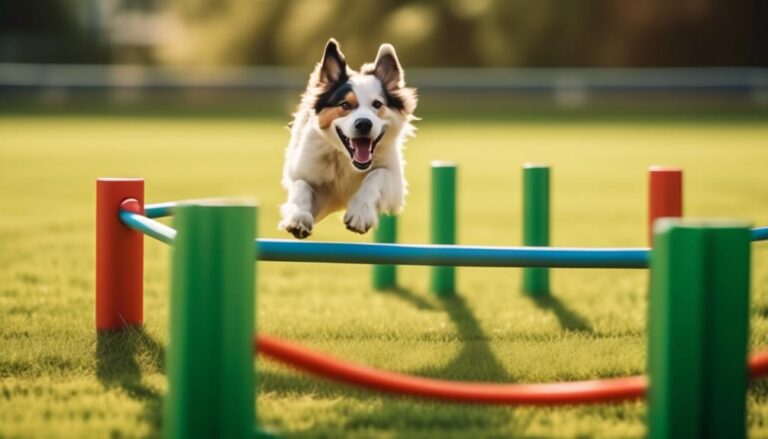Transform Your Pet’s Behavior in 5 Simple Steps

Transform Your Pet’s Behavior: Are you tired of dealing with your pet’s unruly behavior? Frustrated with endless barking, jumping, or destructive habits? Look no further – in just five simple steps, you can transform your pet’s behavior and create a harmonious household. But here’s the catch: it won’t require any expensive gadgets or complicated methods. By implementing proven techniques and understanding the psychology behind your pet’s actions, you’ll be on your way to a well-behaved and happy furry companion. So, are you ready to discover the secrets to transforming your pet’s behavior?
Understanding Your Pet’s Behavior
To truly understand your pet’s behavior, it is important to address bad habits early on and engage in consistent training techniques for long-term success. Behavior management and training techniques play a crucial role in shaping your pet’s behavior. By addressing bad habits promptly, you can prevent them from becoming ingrained and more difficult to change later on. Consistency is key when it comes to training. By consistently reinforcing positive behavior and redirecting or correcting negative behavior, you can effectively guide your pet towards appropriate behavior.
Reward-based training is a highly effective technique to reinforce positive behavior in your pet. Experiment with different treats to find what motivates and rewards your pet the most. This will create a positive association with desired behaviors, making them more likely to be repeated. Remember to be patient and celebrate small successes along the way. Behavioral change takes time and effort, so acknowledge and reward your pet’s progress, even if it’s a small step in the right direction.
Being a good leader and providing guidance is essential in understanding your pet’s behavior. Dogs, in particular, thrive on clear communication and consistent guidance. Instead of focusing on dominance, prioritize clarity and consistency in your interactions with your pet. This will help them understand what is expected of them and build a trusting relationship with you.
Lastly, it is important to be present and fully engaged with your pet. Every pet is unique, so take the time to understand their learning style and adjust your training techniques accordingly. Create a rewarding and enriching environment for your pet, and actively participate in their training and behavioral development. By understanding your pet’s behavior and actively working towards their improvement, you can build a strong bond and ensure a harmonious relationship for years to come.
Setting Clear Boundaries and Rules
Establishing clear boundaries and rules is essential for shaping your pet’s behavior and ensuring a harmonious relationship. By setting clear boundaries, you are providing your pet with structure and guidance, which helps them understand what is expected of them. Consistency is key when enforcing these rules, as it helps your pet learn what behavior is acceptable and what is not.
To effectively set clear boundaries and rules, it is important to clearly communicate them to your pet. Use positive reinforcement to encourage adherence to the rules. When your pet follows the boundaries and rules you have established, reward them with treats, praise, or playtime. This positive reinforcement helps reinforce the desired behavior and encourages your pet to continue behaving in a desirable manner.
In addition to clearly communicating the rules, it is crucial to define the boundaries within your home. Determine areas that are off-limits to your pet and consistently reinforce these boundaries. For example, if you do not want your pet on the furniture, establish this as a rule and redirect them to their designated bed or area. With time and consistency, your pet will learn and respect these boundaries.
When setting rules, make sure they are specific and achievable. Avoid overwhelming your pet with too many rules at once. Start with a few basic rules and gradually introduce more as your pet learns and becomes comfortable with them. Remember to provide rewards for following the rules. This positive reinforcement helps motivate your pet and strengthens the bond between you.
Positive Reinforcement Techniques
Now let’s talk about the benefits of using positive reinforcement techniques to transform your pet’s behavior. By using treats, praise, or playtime as rewards for good behavior, you can effectively communicate to your pet what you expect from them. This immediate reinforcement helps them understand that good behavior is rewarded, increasing the likelihood of them repeating it in the future. Consistency and clear expectations are key in helping your pet navigate their training journey and avoid confusion.
Rewards for Good Behavior
When training your pet, using rewards such as treats, praise, or playtime is an effective way to reinforce good behavior. Rewards for good behavior serve as positive reinforcement, encouraging your pet to repeat the desired actions. It is crucial to reward your pet immediately after they exhibit the desired behavior, as this helps them make the connection between the action and the reward.
Establishing a routine and consistently using positive reinforcement techniques will help your pet understand what is expected of them. Remember to create a positive and safe environment, avoiding punishment and focusing on rewarding good behavior instead. If your pet exhibits persistent negative behaviors, seeking professional help can assist in developing an effective training plan tailored to their specific needs.
Redirecting Unwanted Behaviors
To effectively redirect unwanted behaviors in your pet, utilize positive reinforcement techniques to encourage desired actions and discourage undesirable ones. Redirecting unwanted behaviors is all about identifying and addressing them early on, before they become ingrained habits. Consistency is key in this process. By consistently training and managing your pet’s behavior, you can set them up for long-term success. When your pet exhibits good behavior, be sure to reward them immediately.
This reinforces the positive behavior and increases the likelihood of it being repeated. However, if your pet continues to exhibit persistent negative behaviors that are difficult to redirect on your own, don’t hesitate to seek professional help. They can provide guidance and expertise to address the issue effectively. Remember, redirecting unwanted behaviors takes time and patience, but with the right techniques, you can transform your pet’s behavior for the better.
Consistency in Training
Consistency is key when it comes to training your pet. Establishing a training schedule and sticking to it will help them understand what is expected of them. In addition to consistency in timing, using consistent reinforcement techniques, such as praise and treats, will reinforce desired behaviors and make training more effective.
Training Schedule Importance
Creating a consistent training schedule for your pet is crucial for their behavior transformation and overall success in training. Consistency in training is essential because it helps prevent confusion and creates clear expectations for your furry friend. Regular training sessions reinforce positive behavior and prevent the occurrence of undesirable habits. By establishing a routine, you ensure that your pet receives a steady and well-balanced training program. This consistency also enhances your pet’s ability to understand and respond to commands effectively. A structured training schedule provides stability and security, leading to long-term success in behavior modification. Remember, consistency is key when it comes to training your pet. Stick to a regular schedule, and you’ll see significant improvements in their behavior.
Reinforcement Techniques
One effective way to reinforce positive behavior in your pet is by consistently rewarding them for their desired actions. Consistency is key when it comes to reinforcement techniques in training. By providing consistent rewards, you increase the likelihood of your pet repeating the behavior you want to encourage. It is important to establish clear expectations and avoid confusing your pet with inconsistent behavior.
Stick to a routine approach in training to help your pet understand what is expected of them. Remember to create a positive and safe environment for your pet, focusing on rewards rather than punishment. Consistency in reinforcement techniques will not only aid in transforming your pet’s behavior but also strengthen the bond between you and your furry friend.
Addressing Underlying Issues
To effectively address your pet’s underlying issues and transform their behavior, it is crucial to identify and tackle the root causes. Addressing underlying issues is an essential part of dog training as it helps to address the core reasons behind your pet’s behavioral problems. Identifying these root causes can be challenging, but with patience and persistence, you can make a significant difference in your pet’s behavior.
One important step in addressing underlying issues is to consider seeking professional help. A professional trainer or behaviorist can provide valuable insights into your pet’s behavior and help you understand and manage any underlying issues they may have. They can offer guidance tailored to your pet’s specific needs and help you develop a customized training plan.
It is important to focus on long-term solutions rather than quick fixes when addressing underlying issues. Quick fixes might provide temporary relief, but they won’t address the root causes of your pet’s behavior problems. By taking a proactive approach and investing time and effort into understanding and managing these underlying issues, you can achieve lasting behavior transformation.
Understand that your pet’s behavior is interconnected, and addressing underlying issues can have a positive impact on their overall behavior. For example, if your pet is displaying aggressive behavior, it could be a result of fear or anxiety. By addressing the underlying fear or anxiety, you can help reduce their aggression.
Socialization and Exposure to New Situations
Introducing your pet to a variety of environments, people, and animals from an early age is key to building their confidence and social skills. Socialization and exposure to new situations are essential for your pet’s overall well-being and behavior. By gradually exposing your furry friend to different sights, sounds, and experiences, you can prevent fear and anxiety from developing.
Start by taking your pet on regular outings to different places. Whether it’s a trip to the park, a visit to a friend’s house, or a walk around a bustling neighborhood, these experiences will help your pet become familiar with a range of environments. Encourage positive interactions with other animals and people during these outings. This will help your pet develop their social skills and learn appropriate behaviors.
To ensure that your pet associates new situations with positive experiences, use positive reinforcement. Reward them with treats, praise, or playtime whenever they handle a new situation well. This will create positive associations and make them more confident in the face of unfamiliar circumstances.
It’s important to be patient and go at your pet’s pace. Some animals may take longer to adjust to new situations than others. If your pet struggles with socialization, fear, or anxiety, seeking professional guidance from a veterinarian or animal behaviorist is highly recommended. They can provide tailored advice and strategies to help your pet overcome their challenges.
Seek Professional Guidance if Needed
If your pet is exhibiting persistent negative behaviors, it may be time to seek professional guidance. While there are many steps you can take on your own to address your pet’s behavior, sometimes it’s best to bring in an expert. A certified dog trainer can be a valuable resource in helping you understand the root cause of your pet’s problem behavior and providing effective solutions tailored to their needs.
When you seek professional help, you’ll have the opportunity to work with someone who has extensive knowledge and experience in dealing with various behavioral issues. They will be able to observe your pet’s behavior firsthand and identify any underlying factors contributing to their negative behaviors. With their expertise, they can develop a training plan specifically designed for your pet, taking into account their unique personality, breed, and background.
The guidance of a professional trainer can make a significant difference in transforming your pet’s behavior. They can teach you effective techniques and strategies that will help you address the problem behaviors and replace them with more desirable ones. Additionally, they can provide ongoing support and guidance, ensuring that you stay on track and make progress in your training journey.
Patience and Persistence in the Training Process
Developing patience and persistence is essential for successfully transforming your pet’s behavior through training. It’s important to remember that behavioral change takes time and consistency. Just like humans, pets need time to learn and adapt to new behaviors. So, be patient and understand that it may take months or even years to see lasting results.
One effective way to cultivate patience and persistence is to break down the training process into smaller steps. Instead of overwhelming your pet with a laundry list of commands, focus on one behavior at a time. Celebrate each small success along the way. By setting achievable goals, you’ll keep yourself motivated and your pet engaged.
Realistic expectations play a crucial role in your training journey. Understand that your pet won’t become a model citizen overnight. Acknowledge and appreciate the small improvements your pet makes. Every little step forward counts. Keep in mind that training is a lifelong process, and setbacks are natural. Stay positive, and remember to maintain emotional control during training sessions.
To truly transform your pet’s behavior, think long-term. Instead of expecting instant results, think in terms of months and years. Training is an ongoing commitment that requires consistency and dedication. By investing time and effort into your pet’s training, you’ll build a strong bond and lay the foundation for lasting behavioral change.
Transform Your Pet’s Behavior Frequently Asked Questions
What Are the 5 Steps to Train a Dog?
To train your dog effectively, start with proactive behavior management and consistent training. Use reward-based techniques with appealing treats. Provide team leadership and guidance, be patient for gradual change, and build a rewarding relationship by being present and adaptable.
How Can I Change My Dog’s Behavior?
To change your dog’s behavior, start by using effective dog training techniques. Focus on proactive behavior management, reward-based training with tasty treats, and providing guidance and leadership. Remember, change takes time and patience, so be present and build a rewarding relationship.
What Are the Methods Used to Modify Dog Behavior?
To modify your dog’s behavior, use positive reinforcement. Reward good behavior with treats and praise. Be consistent in your training and provide guidance and support. Patience is key, as behavioral change takes time. Build a rewarding relationship by being present and engaged with your dog.
What Is an Example of Shaping Behavior for Dogs?
To shape your dog’s behavior, start with interactive toys. Encourage them to engage with the toy by using positive reinforcement. Gradually shape their behavior by rewarding small steps towards playing with the toy. Be patient and consistent for the best results.
Transform Your Pet’s Behavior Conclusion
Transforming your pet’s behavior is within your reach! By following the five simple steps outlined in this guide, you can proactively manage any issues, utilize reward-based training techniques, provide leadership and guidance, practice patience, and build a rewarding relationship with your furry friend. With consistency, exercise, mental stimulation, and positive reinforcement, you’ll see amazing results and develop a strong bond with your pet. So, don’t wait any longer – start implementing these steps today and enjoy a well-behaved and happy pet!








